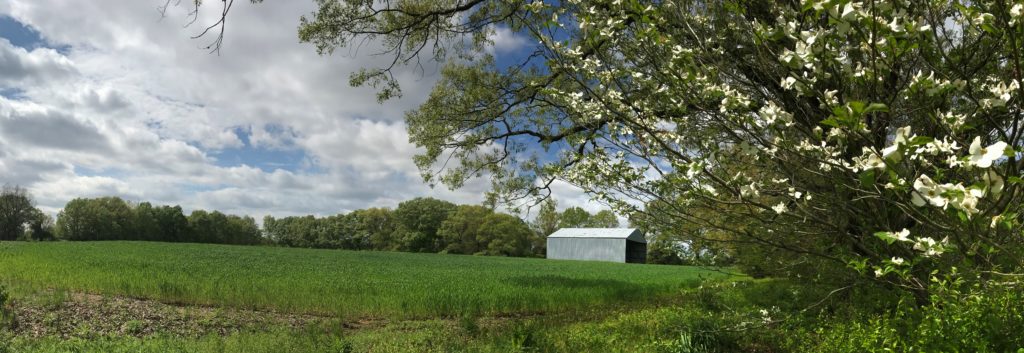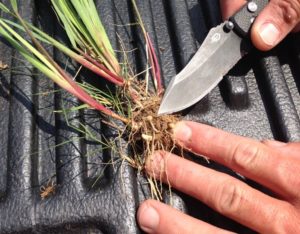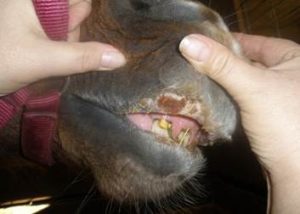Wheat is in bloom across the state and considerations for fungicide applications are being made. While little has been reported on foliar diseases in wheat, the Fusarium Head Blight Prediction model has shown some increased levels of risk for Head Scab. Continue reading
Recent Updates
Junglerice/Barnyardgrass Starting to Emerge in Tennessee

We have started to notice Junglerice/Barnyardgrass emergence here in West Tennessee on Tuesday (April 28th). The key way to ID junglerice at this young stage is the purple base and flat stem. As the grass matures, you will start to notice some purple striping on the leaves as well as not having a ligule.
Summer Internships in AgResearch and Extension
Do you know a college student who is interested in science or agriculture, but needs more experience before starting their career? Tell them about the USDA-NIFA funded Research and Extension Experiences for Undergraduates (REEU) Internship at the West TN AgResearch and Education Center in Jackson, TN. Continue reading
Destroying a Poor Stand of Corn and Replanting Back to Corn
Judging from recent conversations there will be a significant number of corn acres that will need to be replanted. The long cold and wet spell apparently has greatly hindered getting a good stand in some corn fields. Fortunately, there are several options to control a thin corn stand and replant back to corn.
The options, like Select Max, need a waiting period before it can be planted back to corn. Others, like tankmixes of paraquat plus atrazine, allow corn to be replanted right away. Please find attached the results of a study Angela McClure and I conducted on destroying freeze damaged corn and replanting back to corn. We repeated the study the following year on a good stand of corn and got similar results. In this publication (Replanting corn in a failed corn stand) you will find a number of different herbicide options that did a good job controlling an unwanted stand of corn.
Many over the past decade have used the recommendations to satisfactory results. The most consistent time to control an old corn stand is around the V2 corn growth stage, which was the timing the research was conducted. Our experience has been over the years that once the old corn stand matures past V2, results from the herbicides in the publication will likely be more sketchy. In those cases, consider using higher rates of the herbicides in the publication to improve the chance for good control.
Wheat cold tolerance info after the 4/15 frost/freeze
Instead of checking the thermometer last Wednesday morning (4/15) to find temperatures at or around 32 degrees, many found temperatures as low as 28 degrees. By now (over seven days after the lowest nighttime temperature observed 4/15), we can inspect the wheat crop and get a decent estimate of what (if any) damage occurred. Before we get into damage assessments, though, I think it is appropriate to take a look at how cold it got in order to get an idea of the expected level of damage.
Does boron fertilizer use increase corn and soybean yields?
Boron is associated with cell wall biosynthesis, cell wall structure, membrane function, pollen germination, pollen tube growth, and carbohydrate metabolism; hence, insufficient supply can severely impair crop performance, and ultimately result in sub-optimal yields.
Boron deficiency symptoms vary among crops, but, are often noticed on the youngest leaves or terminal buds since boron is not very mobile within the plant. In some crops, deficiency symptoms appear as misshaped leaf blades (Fig. 1). Failure of seed and fruit set has been observed on boron deficient soils (Fig. 2). Deficiency in boron during flowering and fruit may reduce the retention of bud flowers and developing fruits. Some boron deficient crops tend to have short internodes and swollen nodes giving the crops a bush appearance.
Wheat update, April 13th
 Last week was beautiful. As we were all in the midst of figuring out life during unprecedented times, nature appeared to thumb her nose at the COVID-19 pandemic; dogwoods in full bloom, crappie moving into shallow water, tree shaking gobbles echoing through t-shirt temperature mornings. But after almost a week of beautiful weather in West Tennessee, Easter brought a cold and unfortunately hazardous front through the area that will likely stay with us through the week. As I write this on Monday, the forecast for nighttime temperatures sits in the mid to lower 30s for the next several days. These temperatures likely summon difficult memories of the Easter Freeze of 2007. With that in mind, I wanted to pass along a little information that will hopefully put you at ease. Continue reading
Last week was beautiful. As we were all in the midst of figuring out life during unprecedented times, nature appeared to thumb her nose at the COVID-19 pandemic; dogwoods in full bloom, crappie moving into shallow water, tree shaking gobbles echoing through t-shirt temperature mornings. But after almost a week of beautiful weather in West Tennessee, Easter brought a cold and unfortunately hazardous front through the area that will likely stay with us through the week. As I write this on Monday, the forecast for nighttime temperatures sits in the mid to lower 30s for the next several days. These temperatures likely summon difficult memories of the Easter Freeze of 2007. With that in mind, I wanted to pass along a little information that will hopefully put you at ease. Continue reading
Managing Knotroot Foxtail in Pasture

 This is an update to a post run several years ago. You can also download a print-friendly PDF version of this article here, Knotroot Foxtail Facet L Fact Sheet-Revised.
This is an update to a post run several years ago. You can also download a print-friendly PDF version of this article here, Knotroot Foxtail Facet L Fact Sheet-Revised.
Knotroot Foxtail
Knotroot foxtail is a warm-season perennial grass that is also known as knotroot bristlegrass or simply perennial foxtail. It is native to the Americas and can be found throughout Tennessee in hay fields, pastures, lawns, roadsides and waste sites.
Knotroot foxtail is difficult to control. Some of the most serious knotroot foxtail problems are in bermudagrass hay fields. The Continue reading



